We all want to look our best at any age, but sometimes our fashion choices can add years to our appearance without us even realizing it. The clothes and accessories we choose make a powerful statement about who we are, and outdated styles can unintentionally age us.
From clinging to past trends to overlooking proper fit, these fashion habits might be adding candles to your birthday cake.
1. Wearing Outdated Silhouettes
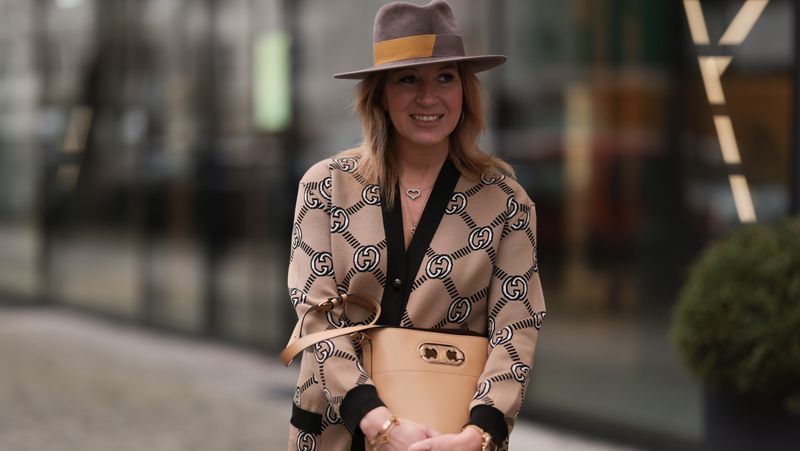
Remember those power suits with linebacker-worthy shoulder pads? They’re not doing you any favors in 2025. Boxy blazers, tapered mom jeans, and those early 2000s bootcut pants can instantly transport you back in time—and not in the cool, vintage way.
Fashion silhouettes evolve for a reason, often becoming more flattering and contemporary with each iteration. When your clothing shapes scream specific decades, you risk looking like you haven’t updated your wardrobe since your glory days.
Try swapping dated shapes for more current cuts that honor your body. A slightly structured blazer without extreme padding or straight-leg jeans with a modern rise can maintain your personal style while keeping you firmly in the present.
2. Overmatching Everything
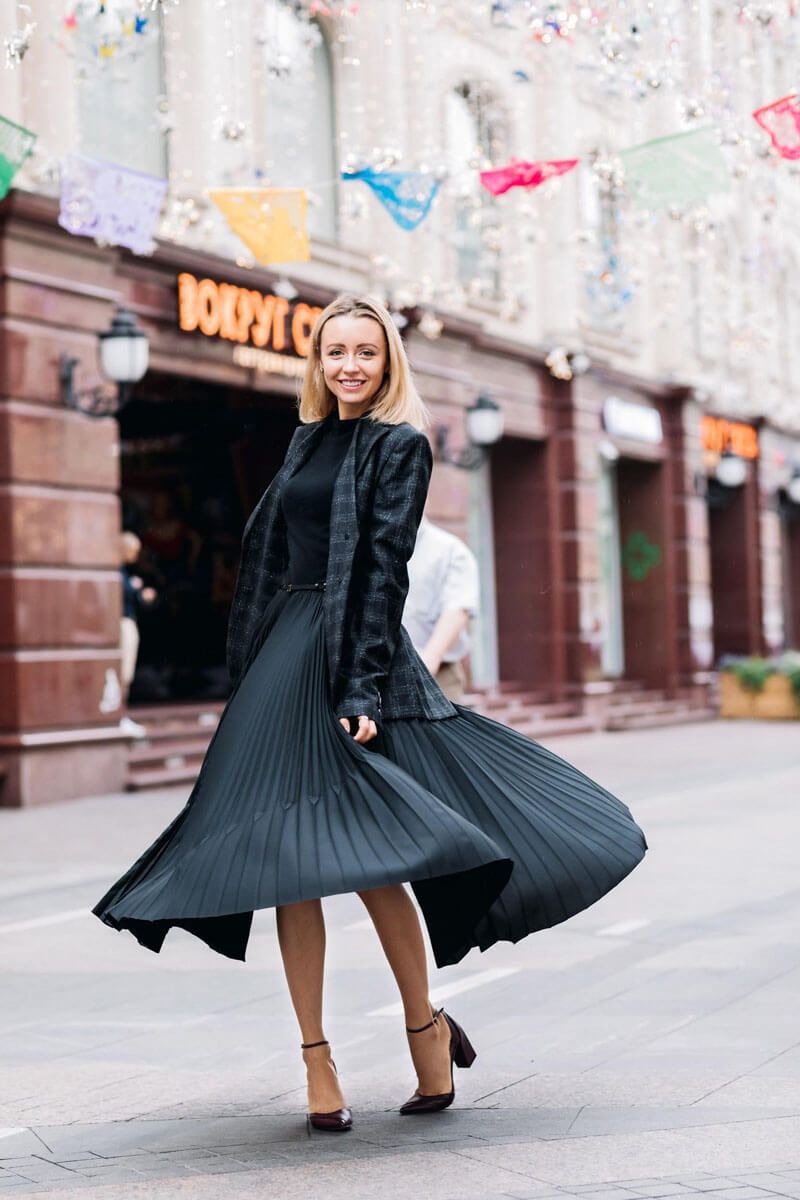
Grandma’s rule about matching your shoes, bag, belt, and lipstick belongs to another era. This hyper-coordinated approach now reads as rigid and calculated rather than stylish. The perfectly matched set signals you haven’t evolved your style thinking since the 1980s.
Modern fashion embraces thoughtful mixing of colors, textures, and finishes. The secret is creating harmony without being obvious. A navy bag doesn’t need navy shoes—try cognac leather instead for unexpected sophistication.
Start small by breaking just one matching element in your outfit. Wear a colorful shoe with a neutral bag, or mix metals in your jewelry. You’ll look instantly more current and fashion-forward while still maintaining a cohesive look.
3. Wearing All Black All the Time
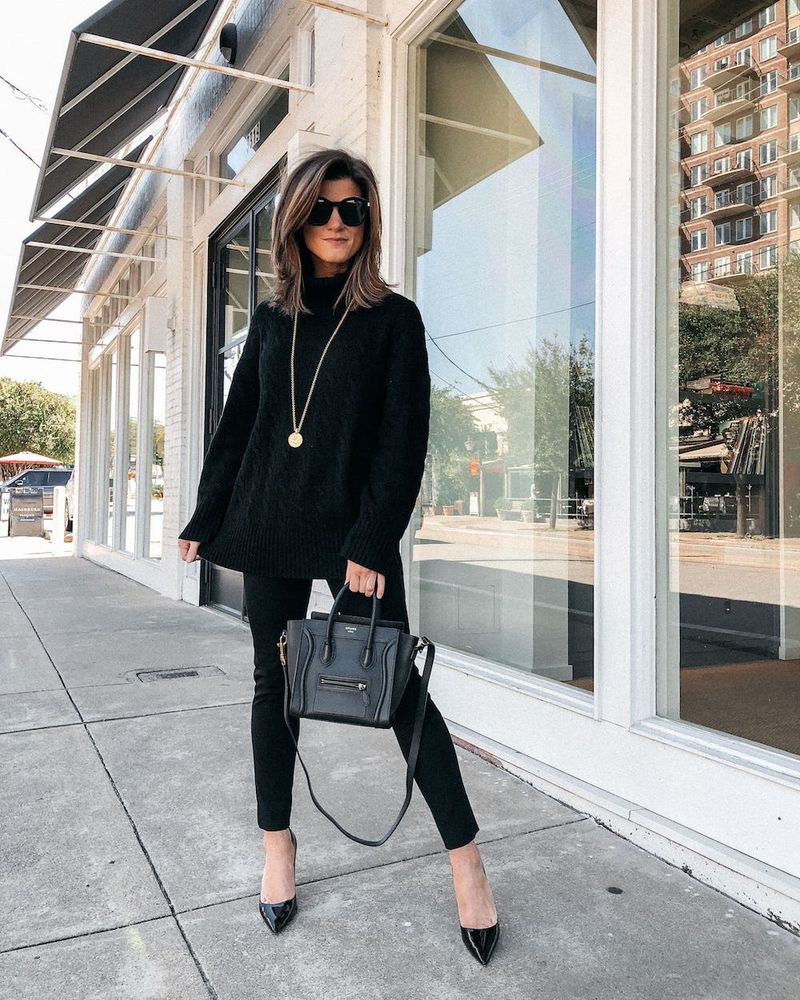
Black is the ultimate fashion fallback—slimming, chic, and supposedly timeless. But as we age, an all-black wardrobe can drain vitality from our complexion and create harsh contrasts with changing hair color. The once-flattering shade can actually emphasize fine lines and shadows on mature skin.
Color psychology shows that softer hues can brighten your appearance and project youthfulness. Navy, for example, offers the same slimming effect as black but with a gentler impact on your skin tone. Jewel tones like emerald, sapphire, or ruby reflect light onto your face for a natural glow.
You don’t need to abandon black entirely—just break it up! A colorful scarf near your face or a vibrant cardigan over a black base can work wonders for your overall appearance.
4. Choosing ‘Comfort’ Over Fit
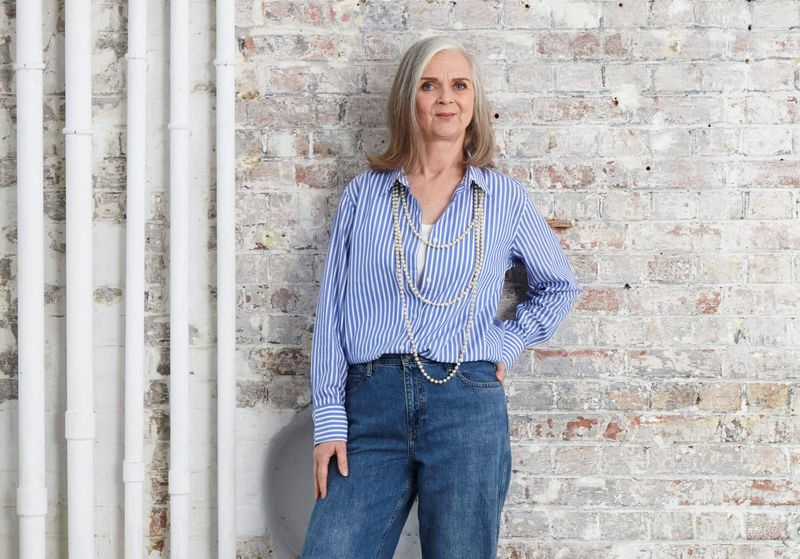
Baggy, shapeless clothes might feel like a cozy security blanket, but they’re actually adding years to your appearance. When fabric swallows your natural shape, the eye perceives more volume than actually exists, creating an instantly aging effect.
The good news? Comfortable clothing and flattering fits aren’t mutually exclusive. Modern fabrics blend structure with stretch, allowing for movement while maintaining shape. The secret is finding your sweet spot—not too tight (which also ages you) and not too loose.
Focus on your best features. If you love your shoulders, choose tops that highlight them while skimming other areas. A slight taper at the waist creates shape without constriction. Remember: clothes should skim your body, not hug or hang off it.
5. Ignoring Undergarments

The foundation makes the house—and your undergarments make your outfit. Visible panty lines, bra bands creating bulges, or straps peeking out scream ‘I didn’t check my mirror!’ These seemingly minor details can undermine even the most expensive outfit.
Statistics show nearly 80% of women wear the wrong bra size, creating unflattering silhouettes that instantly age their appearance. When your foundation garments fit properly, everything layered on top looks dramatically better. Think smoother lines, better draping, and more flattering proportions.
Schedule a professional bra fitting every few years as your body changes. Invest in seamless underwear for fitted clothing. Consider shapewear as a strategic tool for certain outfits—not from a place of body shame, but as a way to create the smooth canvas that helps clothes look their best.
6. Clinging to Trends from Your Youth
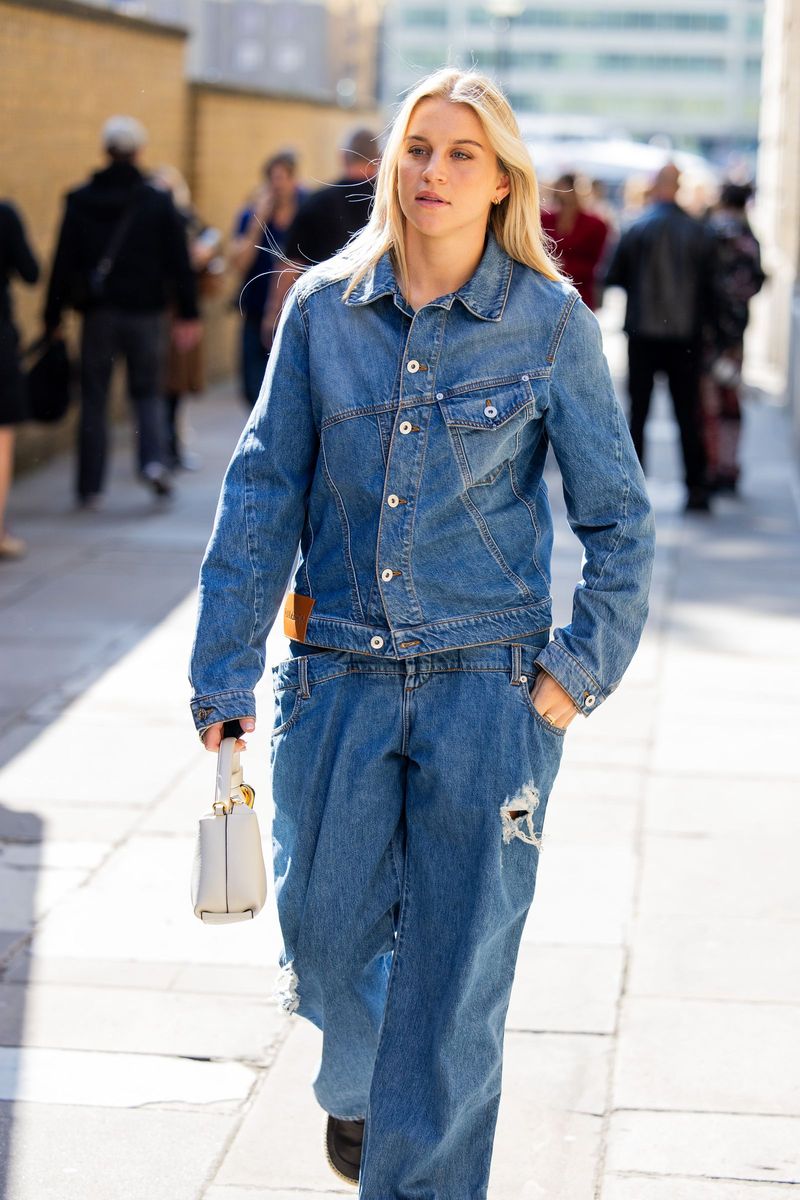
Those low-rise jeans you rocked in 2003? They’re telling everyone exactly which decade you peaked in. Holding onto the fashion highlights from your younger years creates an instant time capsule effect that ages rather than flatters.
Fashion psychologists note we often emotionally attach to styles from our most confident or happiest times. While nostalgia feels comforting, mixing decade-specific trends with your current self can create visual disconnect. The key isn’t abandoning your personal style—it’s evolving it.
Try incorporating just one element from current trends while maintaining your comfort zone. If you loved 90s minimalism, embrace its modern interpretation with cleaner lines and updated proportions. Your style should reflect who you are today, not who you were twenty years ago.
7. Avoiding Modern Accessories
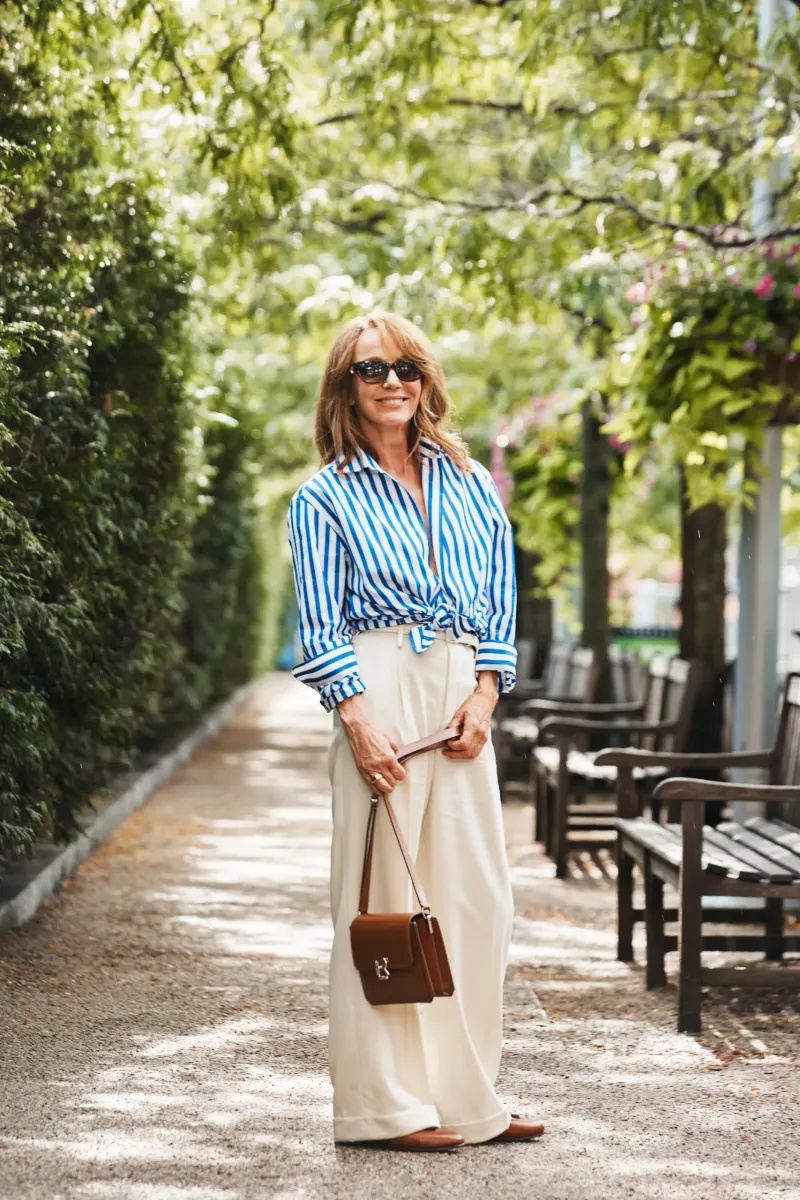
That chain-strap handbag you’ve carried since 1995 is whispering your age to everyone who sees it. Dated accessories—whether it’s a scarf tied in that distinctive “flight attendant” knot or chunky costume jewelry from decades past—can instantly undermine otherwise current outfits.
Accessories speak volumes because they reflect personal choice rather than necessity. When you carry an obviously outdated bag or wear jewelry that hasn’t been in style for decades, it suggests resistance to change rather than classic taste.
The fix is surprisingly simple and budget-friendly. Swap your heavy, structured handbag for something with cleaner lines. Trade elaborate costume jewelry for more minimal pieces. Even small changes—like updating how you tie that scarf—can dramatically modernize your overall appearance without requiring a complete style overhaul.
8. Wearing Heavy or Outdated Makeup With Outfits
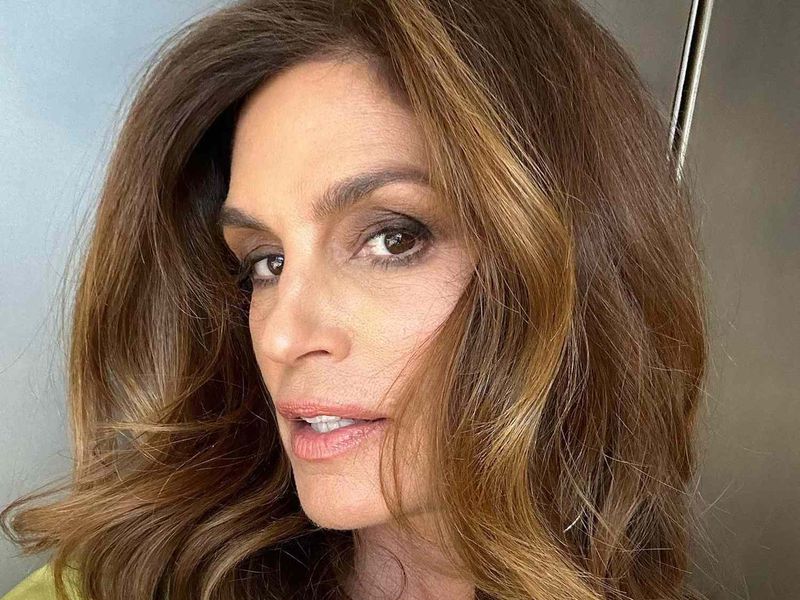
Matte foundation that settles into lines, harsh lip liner with pale lipstick, or blue eyeshadow applied with a heavy hand—these makeup techniques clash dramatically with modern fashion. Even the trendiest outfit can’t overcome the aging effect of dated makeup approaches.
Our skin changes as we age, requiring different techniques and products. Makeup artist Wayne Goss notes that excessive powder products can emphasize texture issues, while harsh lines create an artificial appearance that adds years. The modern approach favors luminosity, blended edges, and strategic color placement.
Consider a makeup refresh with a professional lesson focused on current techniques. Swap powder formulations for cream products that impart a natural glow. Remember that makeup and fashion work as a unified system—when one element remains stuck in time, it pulls your entire look backward.
9. Wearing ‘Old Lady’ Prints

Those tiny floral prints scattered across a beige background? They’re practically announcing your AARP membership. Certain patterns have become visual shorthand for ‘elderly’—ditsy florals, fussy paisley, or muddy-colored abstract prints that seem designed to hide stains.
Print psychology reveals we associate certain patterns with specific demographics. When you choose prints that have been marketed to older generations for decades, you inadvertently place yourself in that category regardless of your actual age.
Bold, graphic prints offer a modern alternative that still provides visual interest. If you love florals, choose larger blooms with cleaner backgrounds. Geometric patterns provide timeless sophistication. Even animal prints, when used judiciously, can add contemporary edge to your wardrobe without trying too hard to look youthful.
10. Overreliance on Conservative Shoes
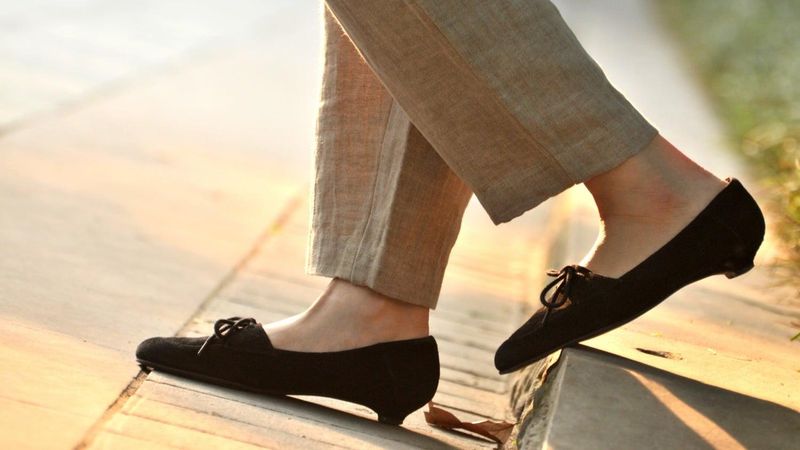
Those sensible square-toed loafers might be comfortable, but they’re broadcasting ‘senior discount’ faster than any other item in your wardrobe. Chunky orthopedic-looking footwear, dated kitten heels, or those distinctive “comfort brand” styles with visible technical features can add decades to your appearance.
Foot health matters at any age—but modern shoe design has evolved dramatically. Today’s comfort brands offer sleeker silhouettes with hidden support features. The contrast between dated footwear and current clothing creates visual disconnect that ages your entire look.
Start by evaluating your shoe wardrobe. Replace obviously dated styles with their modern counterparts. Look for brands like Naturalizer, Clarks, or Ecco that balance comfort with contemporary design. Even small details—like swapping a chunky heel for a sleeker block style—can dramatically update your appearance while maintaining necessary support.
11. Dressing Too Young on Purpose
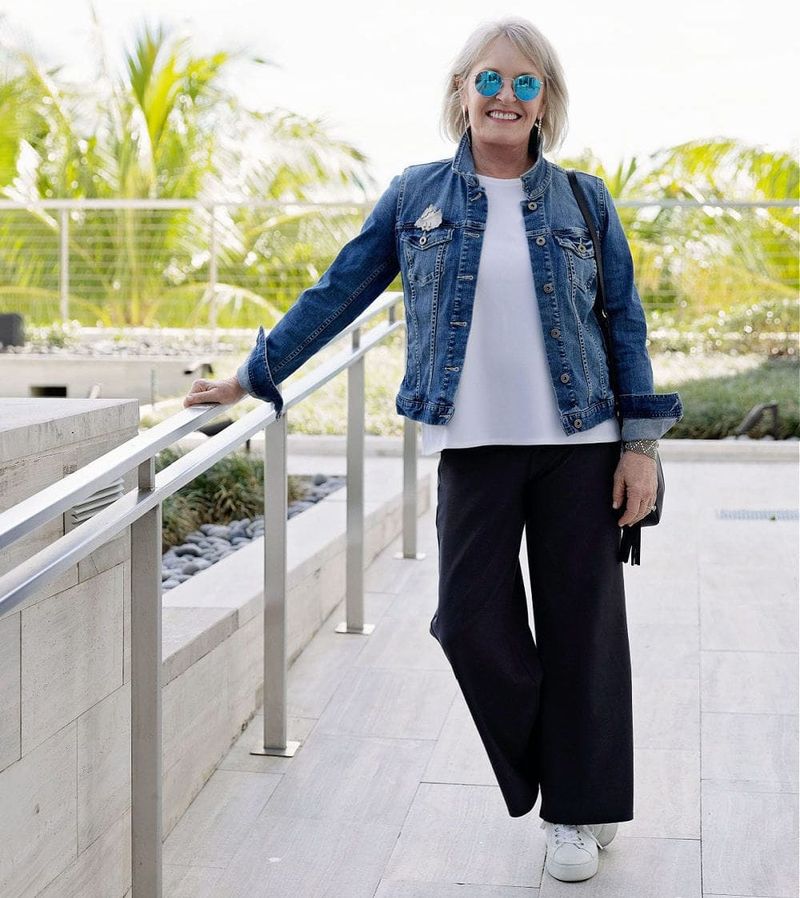
Squeezing into teen-oriented styles doesn’t turn back the clock—it actually highlights the age you’re trying to disguise. The “trying too hard” effect of inappropriate youthful dressing creates cognitive dissonance for viewers, making them more aware of age differences rather than less.
Fashion anthropologists note that age-appropriate dressing isn’t about rules or limitations but about authentic self-expression. When clothing choices align naturally with life stage and personal confidence, the effect is infinitely more youthful than forced trendiness.
Focus on modern, well-cut basics rather than youth-oriented trends. Skip anything with obvious teen-brand logos or juvenile messaging. A streamlined silhouette in quality fabrics reads as confident and ageless, while attempting to dress like your daughter (or granddaughter) creates jarring visual disconnect that ultimately ages rather than rejuvenates.
12. Never Updating Your Hairstyle

That feathered hairstyle from your high school yearbook isn’t a timeless classic—it’s dating you with stunning precision. Hair trends evolve for good reason, incorporating new techniques and products that flatter changing face shapes and hair textures as we age.
Your hairstyle frames your face and interacts directly with your clothing choices. When your hair remains frozen in a specific decade while your wardrobe evolves, the disconnect creates an aging effect. Outdated styling techniques—like stiff hairsprayed curls, visible teasing, or harsh color contrasts—can add years to your appearance.
Schedule a consultation with a stylist who specializes in modern cuts for your age group. Bring photos of contemporary styles you admire. Sometimes small changes—softening a harsh line, updating your color technique, or learning modern styling methods—can dramatically refresh your entire look without requiring a radical departure from your comfort zone.
13. Wearing Clothes That No Longer Fit Well
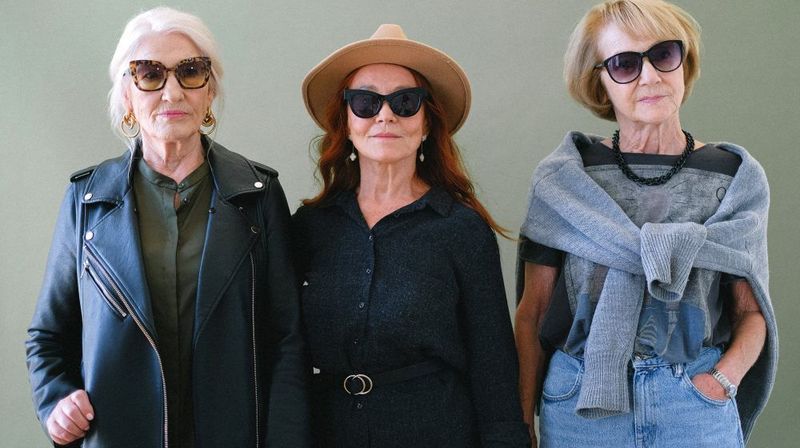
That beloved blazer from your thinner days or those baggy pants you’ve kept as your body changed aren’t doing you any favors. Ill-fitting clothing—whether too tight or too loose—creates an instantly aging effect by suggesting you’re not fully present in your current body.
Our bodies naturally change throughout life. Fighting these changes through squeezing into too-small clothing draws attention to every bulge, while hiding in oversized pieces suggests discomfort with your current self. Both approaches add years to your appearance.
Professional tailoring is the secret weapon of the perpetually well-dressed. Even inexpensive clothes look polished when they fit properly. Take an honest inventory of your wardrobe—set aside emotional attachments and evaluate each piece based on how it fits today, not yesterday. Remember: proper fit is the foundation of style at any age.

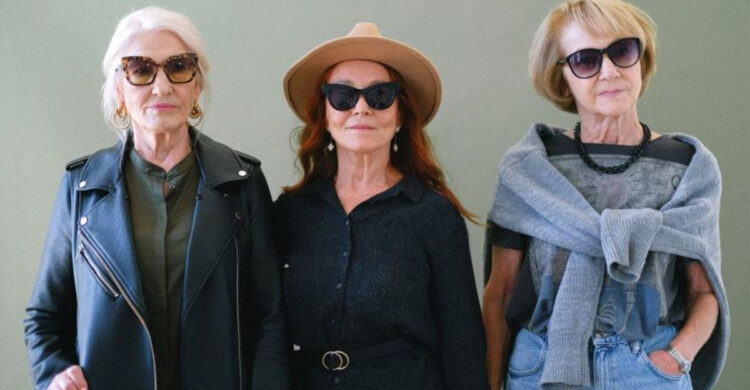
Comments
Loading…